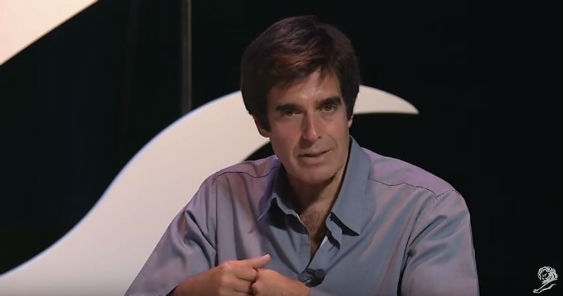MANILA – January 8, 2014 – In the latest issue of adobo magazine, we list the top 10 moments that shaped digital in 2013.
1 – Fashionably Late – For search titan Google, it was a case of better late than never. After leaving the field wide open to Yahoo! for five years, the search titan finally landed in the country on January 23 and hit the ground running to make up for lost time. Initiatives included the launch of a one-stop hub for mid-term election-related news, Cebuano translation facility, the Cloud Developer Challenge, hosted the Google Entrepreneurs Week, backed the first Women on the Web Philippine Summit and unveiled the Knowledge Graph. Just don’t ask where its office is–Google may be a font for all search needs but this doesn’t extend to revealing its office location.
2 – Digital Game Plan – ABS-CBN stepped up efforts to become a power player in digital, hiring Donald Lim, the brains behind MRM Manila’s transformation to digital specialist agency, to drive digital strategy across its entire ecosystem. In that time, the broadcast titan launched a series of major initiatives such as a landmark content-sharing deal to put ABS-CBN News Channel content in front of Yahoo! Philippines’ 2.1 million daily user base, created a fund to turn five crowd-sourced content ideas into webisodes and a ground-breaking partnership to deliver its content and voice, SMS and data through Globe’s platform, making the multimedia player a mobile telco player in its own right.
3 – Smart Move – As PLDT re-engineers itself into a digital media player, its mobile arm Smart took a step forward, becoming both a media platform and marketing company. With the Smart Mobile Advertising service, the telco promises highly-targeted mobile marketing opportunities to advertisers by mining its sizable database to connect brands with their desired market segment. Smart’s move is not unexpected as telcos across the world have had to reinvent their operations to make up for the loss of voice revenue from internet-enabled services such as Skype.
4 – Facebook Addiction – It’s fair to say Filipinos are addicted to social media, Facebook in particular. According to comScore data released in August, the Philippines is the second-largest Facebook market in the world, behind Brazil but only marginally. Even after Facebook did a spring-cleaning of inactive accounts, the country still has close to 35 million Facebook accounts, making the social network a go-to platform for brands such as Nescafe among others.
5 – Anywhere, Anytime – Dominant mobile operators Smart and Globe began pilot-testing competitive location-based marketing services, setting a new marketing milestone in the country in anticipation of surging smartphone adoption rates as the cost of the devices fall. Powered by PLDT Group’s 6.1bn-peso network modernization program, Smart has been testing street-level geo-fencing to provide tailored ads, promotions and deals to its opt-in customer base, whole Globe was adding more location-enabled services on its modernized 2G and 3G and new LTE networks.
6 – Expanding Atom – Havas Media mobile specialist Mobext has taken its Atom project region-wide this year. Launched with a 10-million-peso budget as a pilot in the Philippines last year, the program aim to convert marketer curiosity of mobile marketing into actual use of the medium. Mobext planned to offer 100 advertisers US$85,000, which is half the recommended budget for a mobile campaign, to spend on mobile, and soaring growth in smartphone adoption rates across Asia. In the Philippines, Mobext funded campaigns for a host of big-name brands such as McDonald’s Pond’s, Ayala Malls and Petron.
7 – Roll-outs – The year saw a number of digital launches in the Philippines from established agencies. DM9JaymeSyfu unveiled Di9it headed by former TV5 online publishing business unit head Carlo Ople and DM9 executive creative director Eugene Demata. GroupM meanwhile completed its acquisition of Netbooster Asia, and kept with tradition by christening the agency with a name beginning with the letter M – Movent. Publicis Groupe brought its Performics brand to the market through its ZenithOptimedia office, while Activa Media opened its third Southeast Asian office in Manila, led by movie producer and Post Manila and Revolver Studios president Ronald Monteverde. Finally, Aegis Media tapped India-based Vinay Goel for the launch of its digital out-of-home arm Posterscape.
8 – Smartphone Boom – Local sales of the internet-enabled handsets are sizzling. Smartphone take-up in the Philippines for the year to March 2013 climbed to 146 percent, making it the fastest growing market in Southeast Asia. Falling smartphone prices were expected to keep adoption rates high right through the year. Mobile operators are capitalizing on the cheaper handset prices to drive up mobile internet use – in October, Smart launched its All-in Plan priced at 800 pesos based on the affordable Huawei Ascend G610 that allows subscribers to change their set of voice, data and text allocations each month.
9 – Great Minds? – The world’s three internet and search giants coincidentally updated their logos within weeks of each other. Yahoo!, under the new chief, former Googler Marissa Mayer, led the charge, made the first move in early September and was followed by Bing and Google. "We wanted a logo that stayed true to our roots – whimsical, purple, with an exclamation point – yet embraced the evolution of our products," Yahoo! explained of the change. Google ditched the drop shadows and flattened the colors of its logom as part of a redesign of its homepage, while Bing traded its rounder font for a tighter, slimmer option and went from blue to orange as it updated its site.
10 – Spending Surge – Global digital advertising spend is expected to shoot up 13 percent this year to US$117.6bn, according to a new forecast from e-Marketer and Starcom MediaVest. The outlay on digital will account for 22.7 percent of all adspend this year, rising a full quarter 24.4 percent by next year, according to forecast. Mobile, at just over half of the overall digital spend, is the real growth driver – it will expand by a spectacular 78.7 percent at the end of the year at US$15.8bn, helped by the explosion of smartphone use. 20 percent of the global population has one of these internet-enabled handsets, up from 1.5 percent in 2008.




